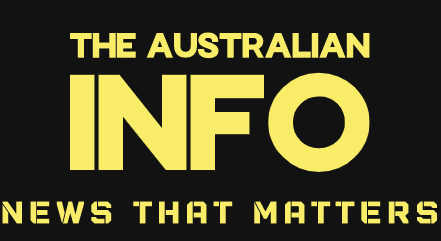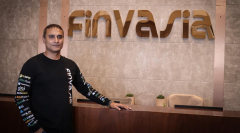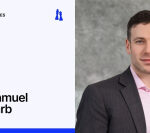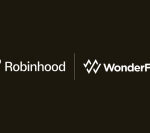“We entered this space not to be another broker—but to question why the system looks the way it does,” Tajinder Virk, the CEO and co-founder of Finvasia Group, told FinanceMagnates.com as he believes that “the job of a broker is to give you clean access to the market; not bombard you with tools you don’t understand.”
He further pointed out at the “fundamental disconnect between what’s good for the trader and what’s profitable for the broker. We’re here to reset that.” He wanted to “to build was truly zero-cost—no spreads, no payment-for-order-flow, no hidden markups,” and succeeded to do so with his platform Shoonya, which means “zero” in Sanskrit.
The brokerage industry has long been dominated by opaque pricing, aggressive marketing, and layered middlemen. Virk believes it is at a tipping point and calls out long-standing structural flaws in the CFD ecosystem. He also criticised the zero-commission gimmick and boldly pitched for rebuilding trust by reducing conflicts of interest between brokers and clients.
The CEO and co-founder of Finvasia Group is calling time on business models that extract value from clients instead of creating it. Recently, Finvasia also questioned the existing business model of brokers and highlighted how these are conflicting with traders interests.
A True Zero-Cost Ecosystem
Virk, a former buy-side professional in the wealth management space, and his team started trading for hedge funds in over a dozen countries before stepping into the brokerage domain. The shift came not from ambition, but necessity.
“Our volumes were so large that the brokerage fees made no sense,” he recalled. “So we started buying our own exchange tickets. That’s when we first understood how the sell-side machinery really works.”
That experience laid the groundwork for Finvasia’s entry into retail trading. “We became professional clearing members, built our own tech, and launched Shoonya, which now adds tens of thousands of clients monthly,” Virk said. The firm’s goal: build a zero-commission, zero-markup, zero-fee brokerage model—“not just free trades like Robinhood, but truly zero-cost.”
“Robinhood isn’t zero-cost. It’s just zero-commission,” Virk said bluntly. “What we wanted to build was truly zero-cost—no spreads, no payment-for-order-flow, no hidden markups.”
You may also like: Fixed-Fee Subscription Model Eliminates Brokers’ Revenue Risks, but Is It Sustainable?
Launched in India, Shoonya exemplifies that vision. Virk claims the brokerage has eliminated 16 different fee components typically levied on retail clients. “There’s no clearing fee, no annual fee, no call-and-trade charges, and certainly no PFOF. We wanted to build something that aligned completely with the client’s success. The bigger they grow their account, the better we do too. That’s what real alignment looks like.”
And the business model? “Treasury management and scale,” he said. “If your AUM grows and you manage it wisely, you don’t need to churn your clients for revenue.”
“We believe that a combination of factors (zero commission trading, the pandemic, greater access to leverage, greater usage of options) has brought about a structural increase over the past decade in the participation of US retail investors in equity trading as well as in their… pic.twitter.com/m6wSd59jv1
— Blake B. Millard, CFA (@BlakeMillardCFA) March 19, 2025
The OTC Maze and Why It’s Broken
While listed markets have relatively clear infrastructure, Virk argues the over-the-counter (OTC) trading ecosystem—especially in CFDs—is structurally flawed.
“You have a broker who goes to a liquidity provider, who then might go to a prime-of-prime, who goes to an exchange. Every layer takes its cut. Spreads widen. Execution slows. Slippage increases. And all of it is paid for by the client,” Virk explains.
The result, he warns, is a system where brokers earn more when their clients trade more—even if those trades are against the client’s own interest. “If a trader makes a rational decision, statistically, they have a 50% chance of being right. Add spreads and slippage, and the odds deteriorate with every trade. It’s a negative-sum game dressed up as a product.”
Interestingly, many brokers are now heavily cutting their spreads to lure traders. Recently, easyMarkets, a CFDs broker, slashed its spreads by up to 25 per cent across instruments. The platform’s CEO Nikos Antoniades admited that the move “will have a direct impact on revenue in the short-term,” but he sees it as a “strategic investment”.
Finvesia cemented its position in the OTC industry with the acquisition of the Fxview operator in 2021. Later that year, the company bought popular copy trading platform ZuluTrade and had to acquire AAAFx, another CFDs broker brand. Virk confirmed that Finvasia has no operational control over AAAFx’s operations.
According to Virk, FXview is deliberately structured without sales teams or high-pressure onboarding tactics. “We don’t call clients. We don’t push them to deposit. We target informed traders who already use multiple platforms. There’s no boiler room here.”
Anti-Gamification and the Role of a Broker
Furthermore, in an era where brokers compete on gimmicks—cashback offers, social feeds, and game-like interfaces—Virk’s stance is refreshingly minimalistic. “The job of a broker is to give you clean access to the market. Not bombard you with tools you don’t understand,” he added.
He draws a sharp line between helpful engagement and harmful gamification, especially when complex products are involved. “If you’re selling CFDs—a professional-grade product—with bells and whistles designed to encourage compulsive behaviour, that’s not innovation. That’s irresponsible.”
In fact, he referenced a long-term study by a major US investment bank that found the most profitable clients were either dead or had forgotten their passwords. “That tells you something about overtrading. Engagement is good when it educates. Not when it distracts.”
More to read: Gamification of FX Trading: Growing Confidence or a Potential Risk?
Another popular services now is prop trading and many big and small brokers are add it to their offerings. Howver, Virk believes much of it is theatre. “No one is really funding anyone. It’s just simulated accounts and challenge fees. We’ve been paying traders on ZuluTrade to demonstrate performance since 2007. That’s closer to real prop than what’s out there now.”
He doesn’t rule out entering the space, but only if it fits a broader purpose. “We won’t do it because it’s hot. It has to solve a problem within our ecosystem.”
On Scale, Survival and the Myth of the Big Players
Starting a broker with a “zero-cost model” is difficult, especially for new entraunts in the market. Virk, however, disagrees that only large brokers can afford to offer clean models.
“We started with one client,” he said. “We struggled to onboard 100 a month. Now we onboard tens of thousands. So when people say small brokers can’t survive without squeezing clients—I don’t buy that. You need vision and patience.”
Finvasia, he says, isn’t just a brokerage group. It operates across financial services, from EMIs to investment banking, and even in healthcare with patented food-based therapies. “It’s all built on one principle: intent. We want to prove that a business can scale without exploiting the user.”
Virk knows his model for the trading industry isn’t mainstream yet. But he believes the tide is turning. “Every industry needs its first whistleblower. Then others speak up. We’re not claiming to be saints, but we are trying to run a business without conflicts—and with transparency.”
He is open to collaboration with other brokers who want to push the industry in a cleaner direction.
“This isn’t just about us. It’s about raising standards. And I believe, eventually, others will follow.”
“We entered this space not to be another broker—but to question why the system looks the way it does,” Tajinder Virk, the CEO and co-founder of Finvasia Group, told FinanceMagnates.com as he believes that “the job of a broker is to give you clean access to the market; not bombard you with tools you don’t understand.”
He further pointed out at the “fundamental disconnect between what’s good for the trader and what’s profitable for the broker. We’re here to reset that.” He wanted to “to build was truly zero-cost—no spreads, no payment-for-order-flow, no hidden markups,” and succeeded to do so with his platform Shoonya, which means “zero” in Sanskrit.
The brokerage industry has long been dominated by opaque pricing, aggressive marketing, and layered middlemen





